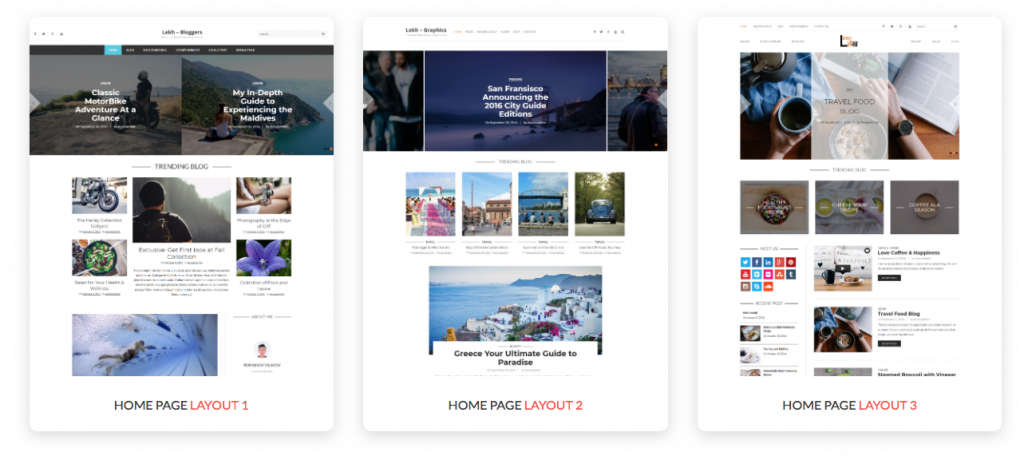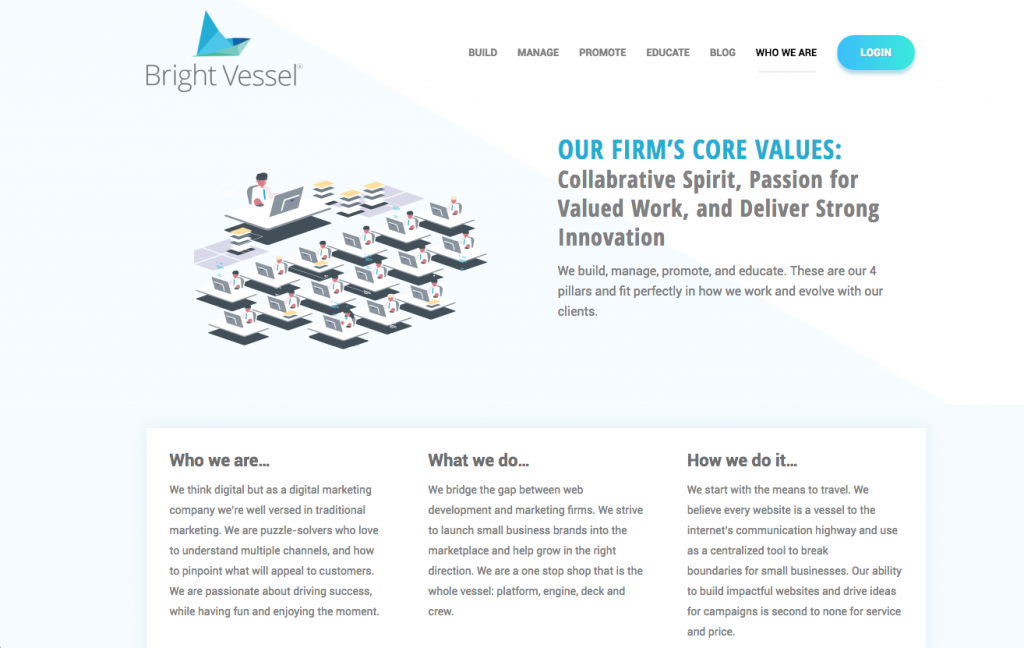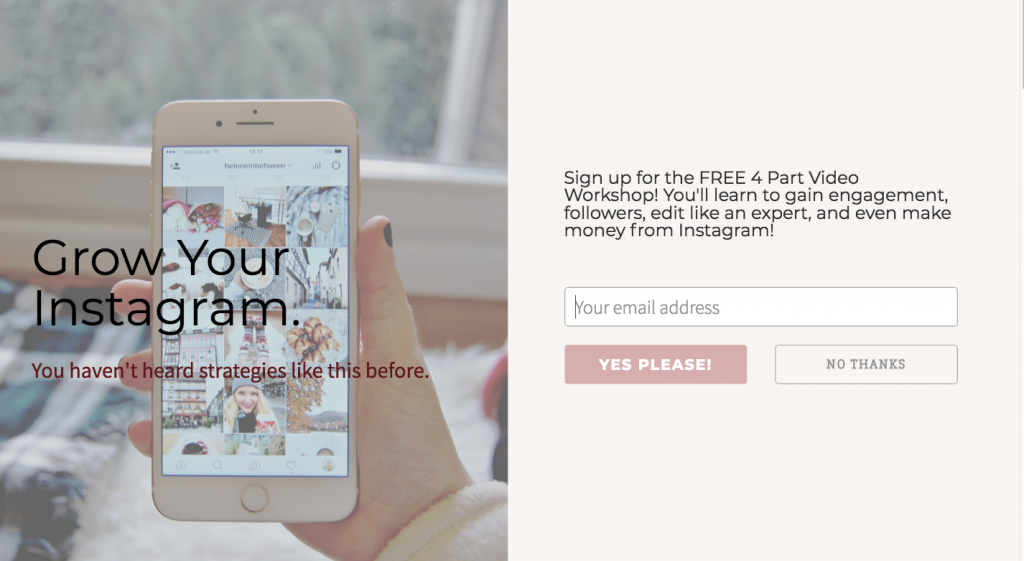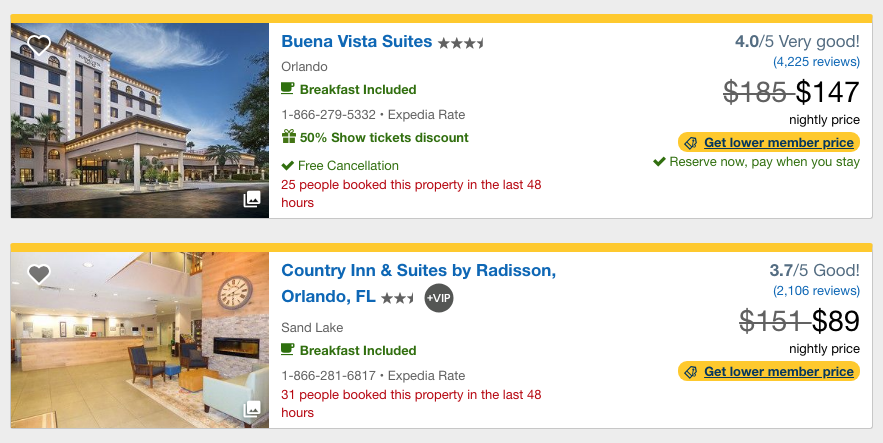7 Simple Ways to Convert Your Visitors Into Customers
You only have a few seconds to make a major impact when your visitors click on your website for the first time. Maybe they found your blog post via Facebook. Perhaps they stumbled upon it in a Google search. No matter how they found you, it’s your website’s job to make sure your visitors stick around long enough to become customers.
Your website matters more than you think. Previously, it was possible to slap together a website with any old builder or template and call it a day. Because there was such limited competition, this would usually be enough to gain you some attention or even customers. Today, the tides have turned for good.
It takes an average of 50 milliseconds or 0.05 seconds for users to form an opinion about whether or not they like your website. What does this mean for you? It means you need quality content, design, and an optimized structure if you want to earn money with your website. Whether you’re using your website for your business, to sell products, to share your thoughts, or even just to bring awareness to a cause, you need to be strategic.
In this article, we’ll be talking about some simple ways to convert your visitors into actual paying customers. These aren’t complicated tactics. You don’t need a degree in digital marketing to make strides online. However, you do need to be willing to make the right changes to see success.
Finally, realize that success won’t happen overnight. You don’t want to be an overnight viral sensation anyway. Those trends are short-lived and won’t bring long-term and sustainable revenue. Instead, we’ll talk about real-life ways to bring customers back again and again with a few simple tricks. Let’s get started.
1. Start with Quality Design
The quality design takes your website further than you think. We’ve all experienced poorly designed websites at some point when browsing the web. Despite it being the 21st century, the internet is chock full of them. They’re hard to navigate, lack any clear branding, and simply are unpleasant to use as a visitor.
The simplest way to convert your visitors into customers is to invest in quality website design. Using a WordPress blog is the easiest and fastest way to make sure your website is up to par with web design standards. More importantly, you don’t need any coding or design skills to get started.
There are free and inexpensive WordPress themes for every blog type, business type, and industry imaginable. You can find something that works for your taste that won’t risk losing any visitors. Once you have a theme installed in as little as a few clicks, it’s easy to customize any changes you might need to make the theme feel like it belongs to you. From there, you’re ready to start a serious journey as a website owner.
2. Create a Compelling About Page
One of the easiest parts of a website to overlook is the about page. It’s where you share your story, your way, and what sets you apart from other similar websites. Yet, so many new and experienced website owners think this page can be pushed aside or left short and sweet.
In simple terms, your about page matters because it’s likely one of the first pages first-time visitors will visit. They click on your website, scroll through the homepage, and then they want to learn more. To discover all of the important things about your business or website, they click immediately on your about page. When your about page lacks any real substance or information, it’s a turn-off to your customers. If you can’t be bothered to write a complete about page, why should they purchase anything from you?
Here’s the anatomy of an about page:
- Introduce yourself and your business
- What drive you or your business?
- Why is your business special?
- What is your business intended for?
- What is the best content that you’d recommend to first-time visitors?
- How can visitors contact you?
Though that might seem like a lot, it’s much simpler than you think to get all of that key information on the page. From there, your customers will know what to do next, how to reach you, and why they should care about your business in the first place. See below how Bright Vessel, a marketing and web design agency, uses their about page to their advantage.
3. Build an Email List
If you have a website, why do you need an email list? Isn’t email marketing slowly dying? Believe it or not, email marketing is not only alive but it’s thriving. Today, a reported 80% of marketing professionals claim email marketing is driving customer acquisition and retention. That’s a big percentage, and it just goes to show email marketing is here to stay.
So why use email marketing? In the world of followers, likes, and online engagement, email is the only thing you truly own. You don’t know your Facebook page followers or your Instagram likes. That can all disappear in an instant. However, your email signups are yours to keep. It’s a list of people interested in learning more about your product. In the marketing world, we call that a lead. Luckily, it’s easy to get started with email tools like ConvertKit and MailChimp. Running a DMARC report analyzer before starting your email campaign is also a good idea.
4. Offer Something for Free
Now that you know just how powerful an email list can be for converting website visitors, it’s time to explain how to get people to sign up for your list. As you might imagine, email newsletters and update-type posts aren’t popular. People get a lot of emails daily. So many in fact that people have started picking and choosing what they sign up for. That being said, you need a way to entice those would-be customers to sign up for more information.
The solution is simple. Everyone likes free stuff, so offer something for free. In the marketing world, this is known as a lead magnet. A lead magnet can be anything your target audience wants. If you’re a food blog, for example, you might offer a free mini-cookbook that can be downloaded.
There are a few things that will help your lead magnet make an impact:
- Short and sweet – Lead magnets are easy to consume, so this isn’t the time to share your 3000-page novel.
- Drives action – Your lead magnet should be tied to a paid product or service that your customers will want.
- Relevant – Make sure your freebie is relevant to your audience. If not, the leads aren’t very useful!
- Instant – Use your email client to make sure your lead magnet is delivered immediately after signup.
Check out the example from travel blogger Helene of Helene in Between. Her lead magnet is a series of video workshops all about Instagram engagement. See how simple she makes it to sign up to her email list?
5. Establish Social Proof
Beyond email lists, you need to prove to your customers that you know what you’re talking about. You do this by establishing trust with your audience, and one way to build that trust is with social proof. Social proof sounds complicated, but you’ve probably already seen it in action many times. Any time a celebrity endorses a product, for instance, that’s social proof. However, you don’t have to go out and find a celebrity to speak on your behalf to get the same effect.
One simple type of social proof is including reviews. Did you know nearly 70% of all online shoppers look at reviews before they decide to make a purchase? Adding a way to easily leave reviews and testimonials shows that you’ve successfully helped other customers in the past.
Another form of social proof is real-time stats. If you’ve ever been on a website and seen a notice telling you that someone else purchased from this website just a few minutes ago, that’s social proof in action. See an example below from Expedia, an online travel booking website. Expedia shows real-time customers how many people booked this hotel recently through social proof.
6. Use Videos on Your Website
Videos are quickly becoming a compelling way to convert your visitors into customers. According to a 2017 study about video marketing, when companies added a video to their websites and marketing strategy, they saw an 81% increase in sales. Videos offer more than 2D photos, and they’re a new way for customers to experience a product, get to know a business, or interact with online content.
You can integrate videos of your best products, explain your services, address customer questions, or even just as part of your content strategy. Including a short video with each blog post, for instance, is a great way to reduce your bounce rate and build a relationship with your audience. Videos seem like small things, but they make an impact online.
7. Track Your Visitors
When you have a big company, the best way to control your employees is to keep track of the time they spent while they are at work. The same goes for your visitors. The best way to convert your visitors into customers is simply to keep accurate track of them. This isn’t as spammy as it sounds. Analytics tools like Google Analytics are designed with this in mind. Learning more about your visitors’ demographics, devices, and interests will let you know if you’re attracting the right audience.
Aside from Google Analytics which everyone should already be using to track traffic, you can monitor how users are interacting with your website thanks to new technology. Hotjar has a tool for recording user behavior so you can see just how your customers are interacting with your pages, content, and more.
See what links are being clicked on and how your users are spending their time. Are there problem pages that send users away? Do some blog posts perform better than others? Finally, get an up-close look at how your audience is interacting with your website. You might discover a problem or roadblock you didn’t notice before.
Convert More Visitors to Customers
With a few changes in perspective, you’ll be converting your visitors into customers in no time. As you can see above, you don’t need to be a web developer or full-time marketer to make a difference. Take these strategies seriously, no matter how simple. They’re proven by research, trends, and user behavior.
Like all aspects of your business strategy, you’ll need to rely on some trial and error. Things aren’t guaranteed to work perfectly the first time around. What makes someone a good business owner is their dedication to trying again and again. Your visitors are out there already. It’s up to you to find them and convince them your business is better than countless others. It’s not as hard as you think.






